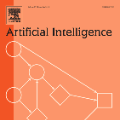The rapid adoption of artificial intelligence (AI) and machine learning (ML) has generated growing interest in understanding their environmental impact and the challenges associated with designing environmentally friendly ML-enabled systems. While Green AI research, i.e., research that tries to minimize the energy footprint of AI, is receiving increasing attention, very few concrete guidelines are available on how ML-enabled systems can be designed to be more environmentally sustainable. In this paper, we provide a catalog of 30 green architectural tactics for ML-enabled systems to fill this gap. An architectural tactic is a high-level design technique to improve software quality, in our case environmental sustainability. We derived the tactics from the analysis of 51 peer-reviewed publications that primarily explore Green AI, and validated them using a focus group approach with three experts. The 30 tactics we identified are aimed to serve as an initial reference guide for further exploration into Green AI from a software engineering perspective, and assist in designing sustainable ML-enabled systems. To enhance transparency and facilitate their widespread use and extension, we make the tactics available online in easily consumable formats. Wide-spread adoption of these tactics has the potential to substantially reduce the societal impact of ML-enabled systems regarding their energy and carbon footprint.
翻译:暂无翻译




